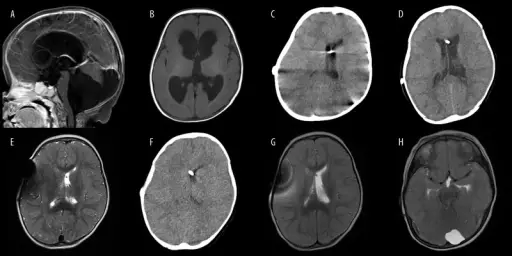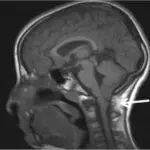Dandy-Walker malformation is a rare congenital brain malformation in which the cerebellar vermis does not completely form.
What is the Pathology of Dandy-Walker Malformation?
Etiology: The cause of Dandy-Walker malformation is the disruption of embryonic development that affects the formation of the cerebellar vermis. This is usually a genetic mutation that results in impaired cell migration and division.
Genes involved: Trisomy 18 (Edward’s trisomy), FOXC1, NID1, ZIC1, ZIC4, FGF17, and LAMC1.
Pathogenesis: The sequence of events that lead to Dandy Walker malformation is the agenesis of the vermis, and cystic enlargement of the fourth ventricle which causes upward displacement of the tentorium and torcula.
How does Dandy Walker Malformation Present?
Patients with Dandy walker malformation are males and females of equal occurrence. The symptoms, features, and clinical findings associated with Dandy Walker syndrome include hydrocephalus, endocrine disorders, developmental delay, and eye abnormalities.
How is Dandy Walker Malformation Diagnosed?
Dandy walker malformation is diagnosed with the use of ultrasound, CT and MRI. Prenatal diagnosis of Dandy-Walker malformation is sometimes made by ultrasound or fetal MRI.
How is Dandy Walker Malformation Treated?
Dandy Walker malformation is treated according to the symptoms, whcih may include surgery and genetic counseling.
What is the Prognosis of Dandy Walker Malformation?
The prognosis of Dandy Walker malformation is poor and problems related to hydrocephalus are the most common cause of death.



